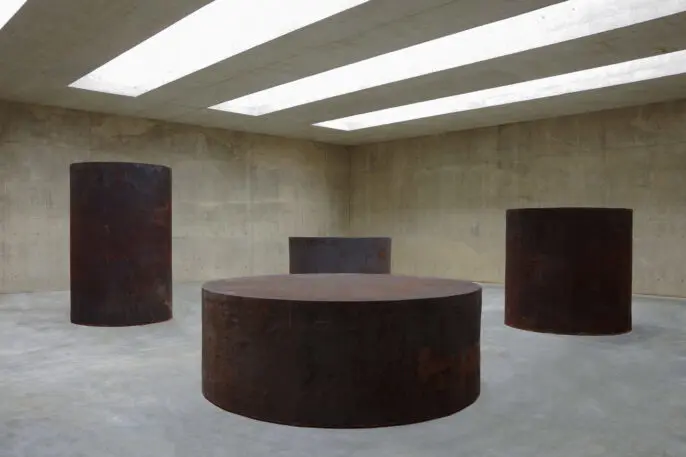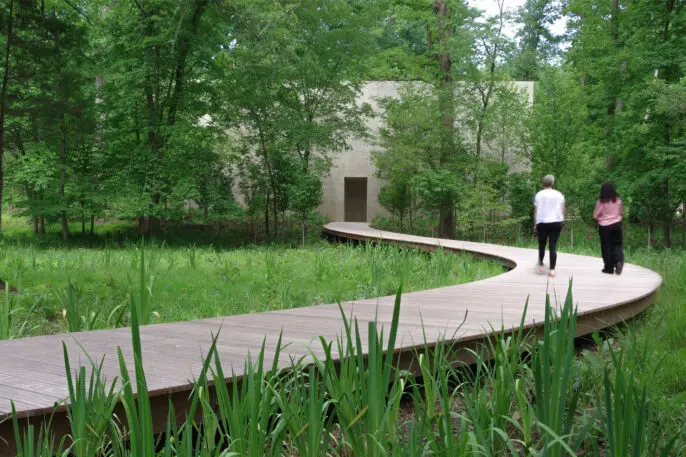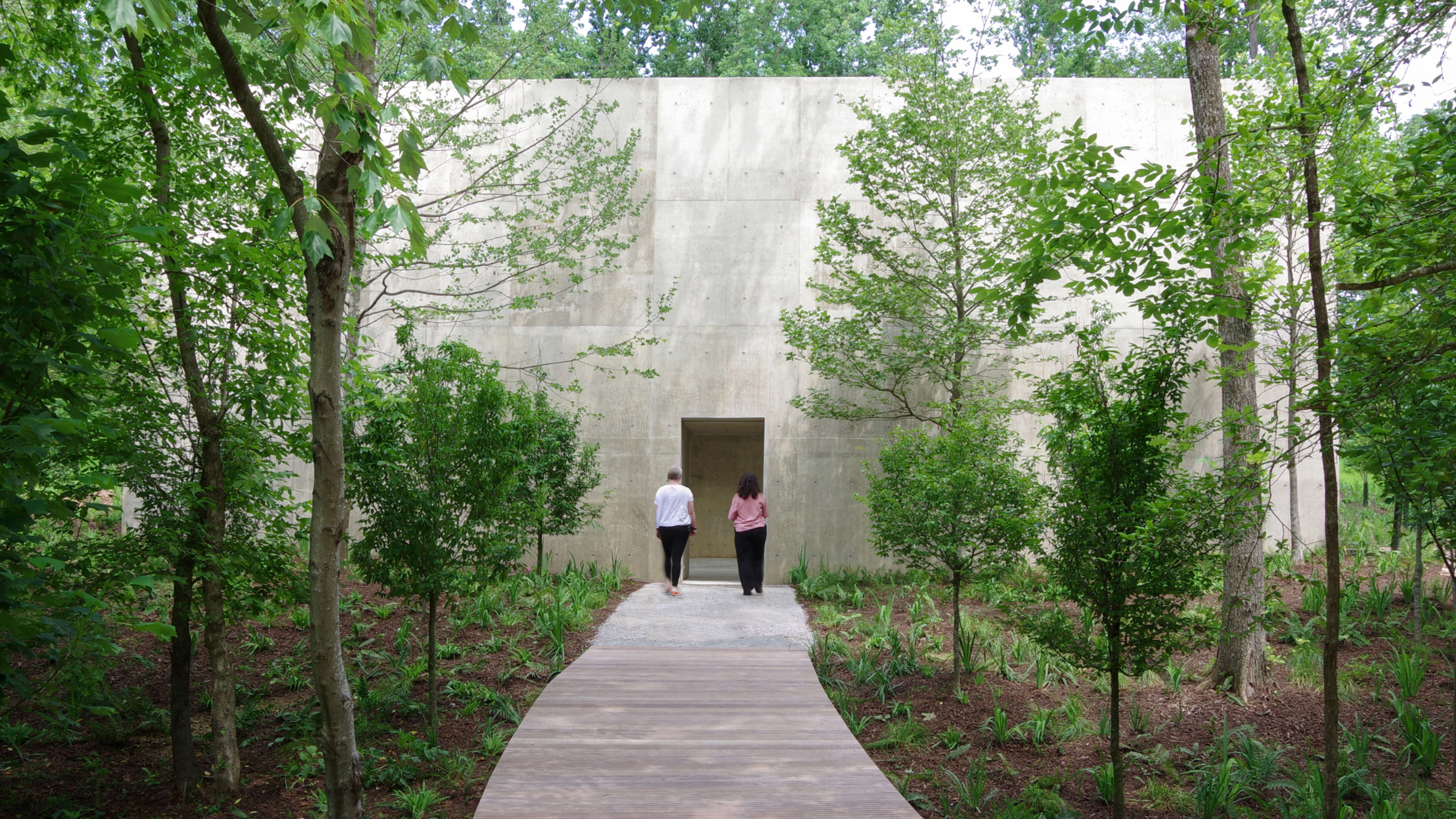A large-scale work by sculptor Richard Serra has just been put on display in a very specific space. Designed in conjunction with the artist himself, a new building has been constructed for the sole purpose of showing this sculpture.
The artwork is Four Rounds: Equal Weight, Unequal Measure, completed in 2017, which features four massive forged steel cylinders of different heights and diameters weighing 82 tons each.

Serra is known for his huge steel sculptures that recall canyons—and his work has been displayed around the world. Phifer worked closely with Serra, now 82, to design what has become a walk-in display case for his monumentally sized work. “We attached ourselves at the hip and made this building together,” Phifer says. “I really wanted to see this building through his eyes.”

The building is perfectly square, 64 feet long on each side and 28 feet tall. Given the weight of the sculptures, the floor had to be especially strong: It’s a 4-foot-deep slab of solid concrete.
Light was particularly important to the artist. “Richard was adamant that there not be any direct light in the space,” Phifer says. “He didn’t want any shadows, so as you looked at these round forms, he didn’t want one side to be in shade and the other in bright sun.”
To make that possible, the building is topped with four large white glass skylights recessed in deep wells. “It diffuses the light so it gives completely even light over the space and the works themselves,” Phifer says.
Phifer calls Serra one of the most significant sculptors of our time, and says working directly with the artist was a privilege. “I’m not sure my enthusiasm and the work ethic here could have been any higher,” he says. “I’ve never had an experience quite like this.”
But he notes that the work was focused not on the artist or his reputation but on making the best possible space to display the sculptures. “Every decision we made and every choice he made was in direct service to that work,” Phifer says.
The building is now open; admission to the museum is free.
Recognize your brand’s excellence by applying to this year’s Brands That Matter Awards before the early-rate deadline, May 3.
